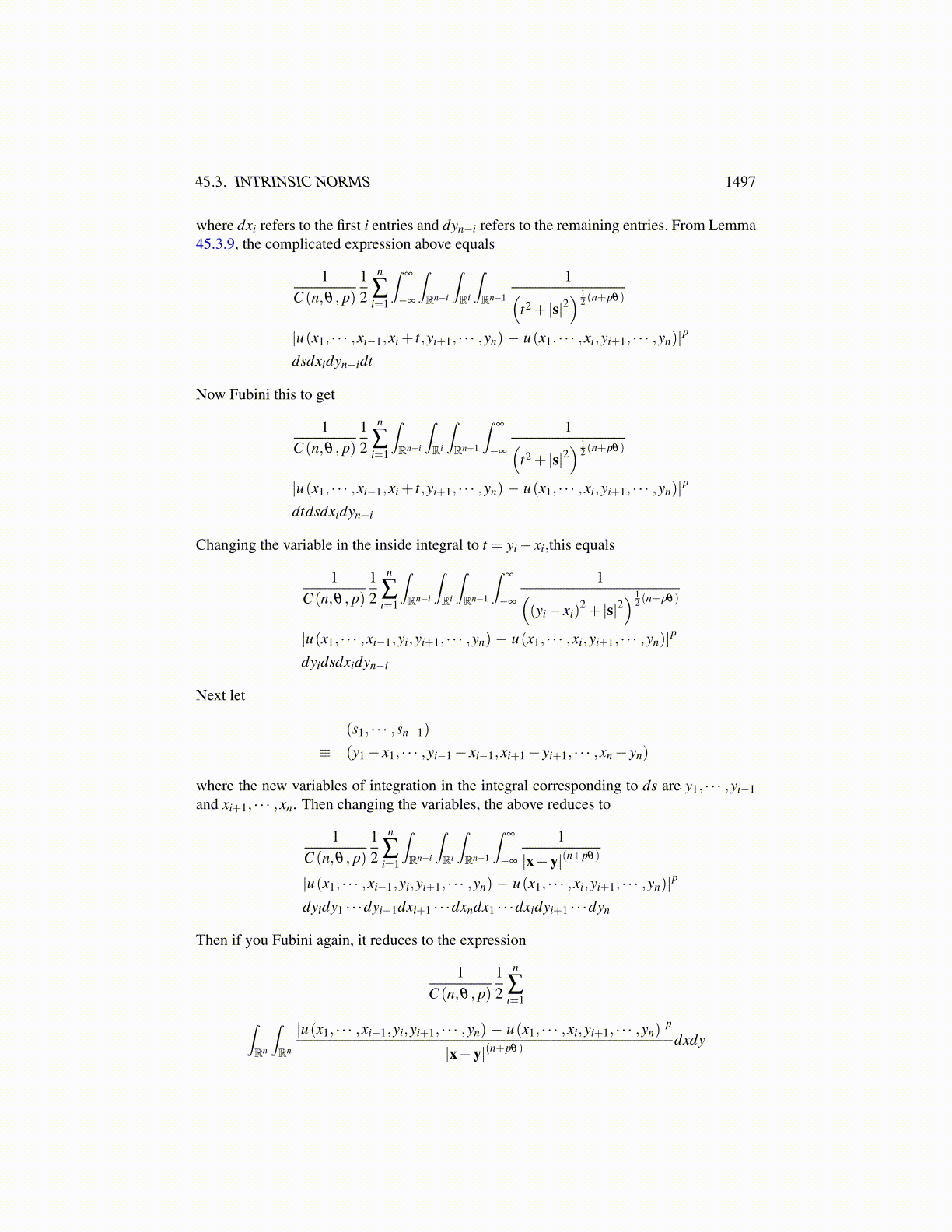
45.3. INTRINSIC NORMS 1497
Theorem 45.3.7 An equivalent norm for W θ ,p (Rn) for θ ∈ (0,1) is
||u||pW θ ,p(Rn)
=
||u||pLp(Rn)+
n
∑i=1
∫∞
0t(1−θ)p
∣∣∣∣∣∣∣∣Gi (t)u−ut
∣∣∣∣∣∣∣∣pLp
dtt
= ||u||pLp(Rn)+
n
∑i=1
∫∞
0t(1−θ)p
∣∣∣∣∣∣∣∣u(·+ tei)−u(·)t
∣∣∣∣∣∣∣∣pLp
dtt
(45.3.14)
Note it is obvious from 45.3.13 that a Lipschitz map takes W θ ,p (Rn) to W θ ,p (Rn) andis continuous.
The above description in Theorem 45.3.7 also makes possible the following corollary.
Corollary 45.3.8 W θ ,p (Rn) is reflexive.
Proof: Let u ∈W θ ,p (Rn). For each i = 1,2, · · · ,n, define for t > 0,
∆iu(t)(x)≡u(x+ tei)−u(x)
t
Then by Theorem 45.3.7,
∆iu ∈ Lp ((0,∞) ;Lp (Rn) ,µ)≡ Y
whereµ (E)≡
∫E
t(1−θ)pt−1dt.
Clearly the measure space is σ finite and so Y is reflexive by Corollary 21.8.9 on Page687. Also ∆i is a closed operator whose domain is W θ ,p (Rn). To see this, supposeun ∈W θ ,p (Rn) and un → u in Lp (Rn) while ∆iun → g in Y. Then in particular ||∆iun||Yis bounded. Now by Fatou’s lemma,∫
∞
0t(1−θ)p
∣∣∣∣∣∣∣∣u(·+ tei)−u(·)t
∣∣∣∣∣∣∣∣pLp(Rn)
dtt≤
lim infn→∞
∫∞
0t(1−θ)p
∣∣∣∣∣∣∣∣un (·+ tei)−un (·)t
∣∣∣∣∣∣∣∣pLp(Rn)
dtt< ∞.
Letting ∆⃗≡ (∆1,∆2, · · · ,∆n) , it follows from similar reasoning that ∆⃗ is a closed oper-ator mapping W θ ,p (Rn) to Y n. Therefore(
id, ∆⃗)(
W θ ,p (Rn))⊆ Lp (Rn)×Y n
and is a closed subspace of the reflexive space Lp (Rn)×Y n. With the norm in Lp (Rn)×Y n
given as the sum of the norms of the components, it follows the mapping(
id, ∆⃗)
is a